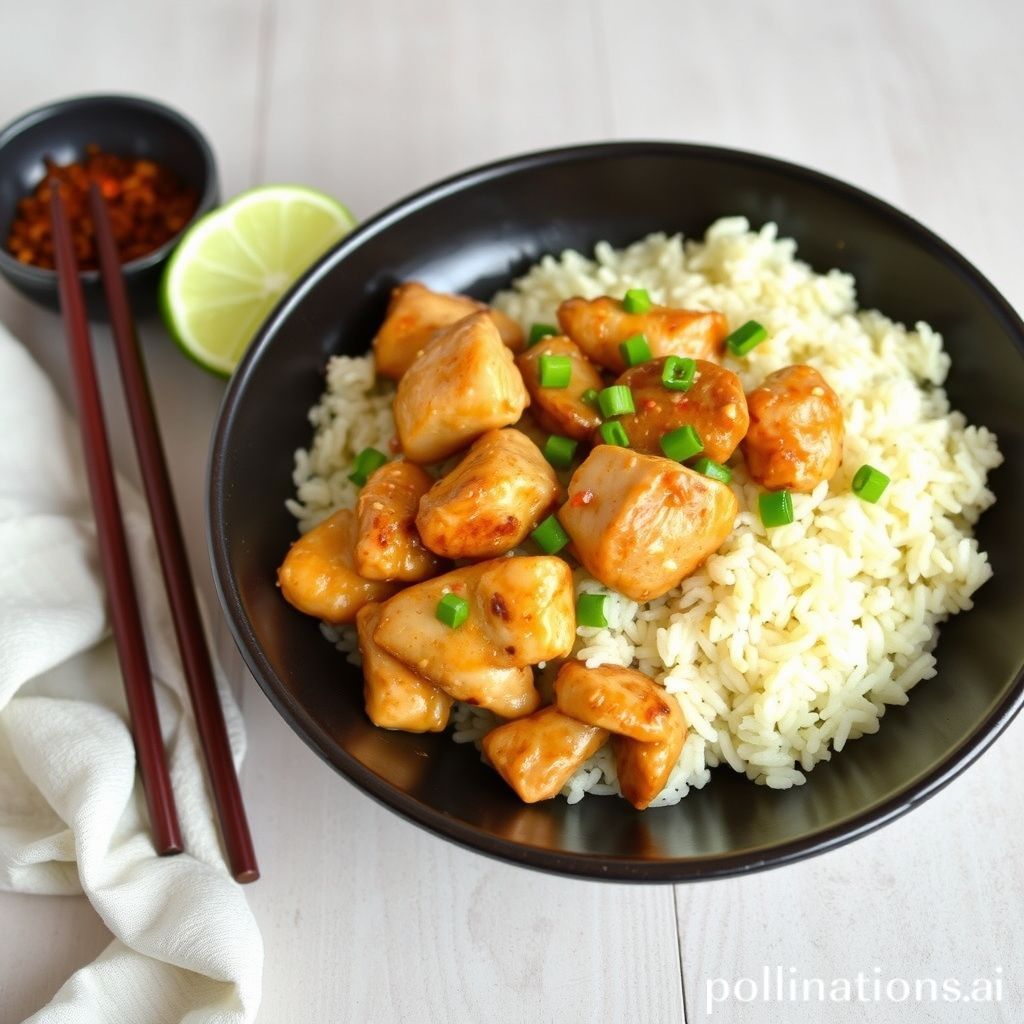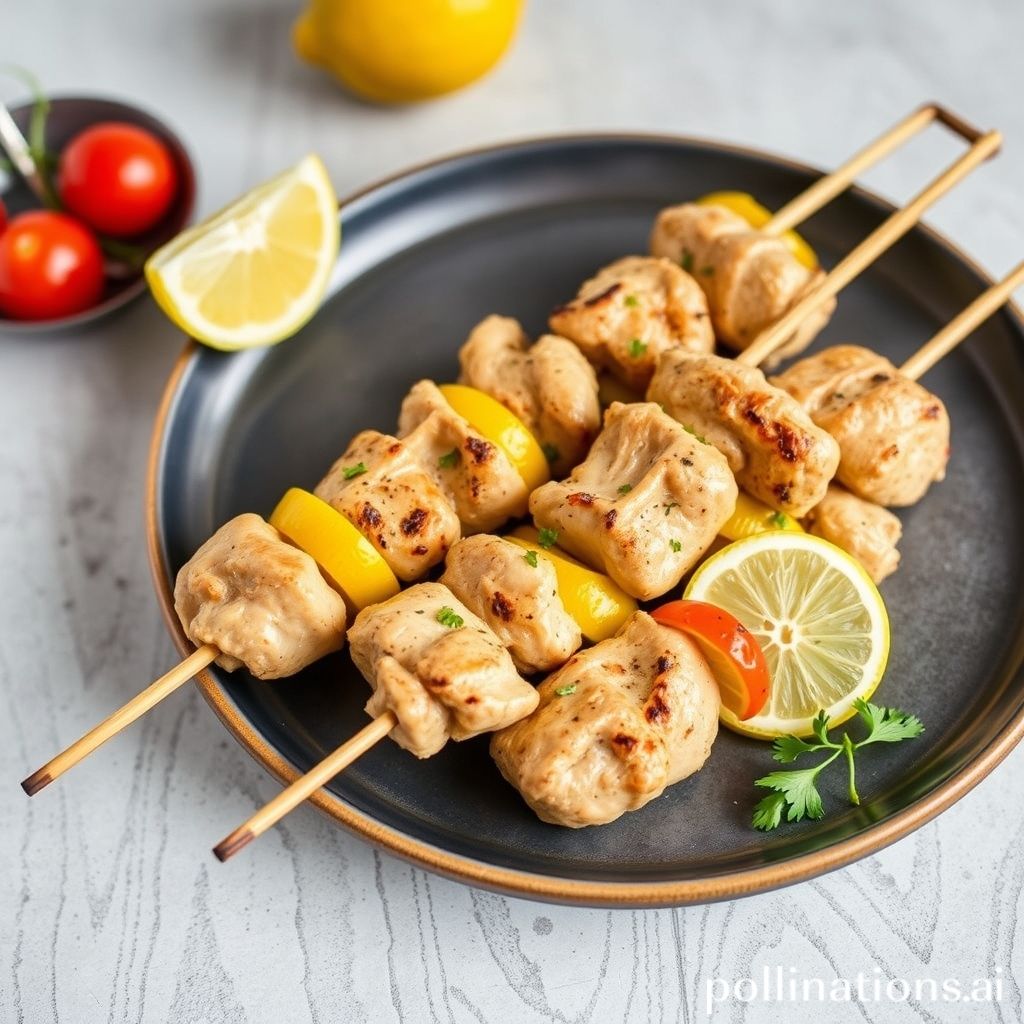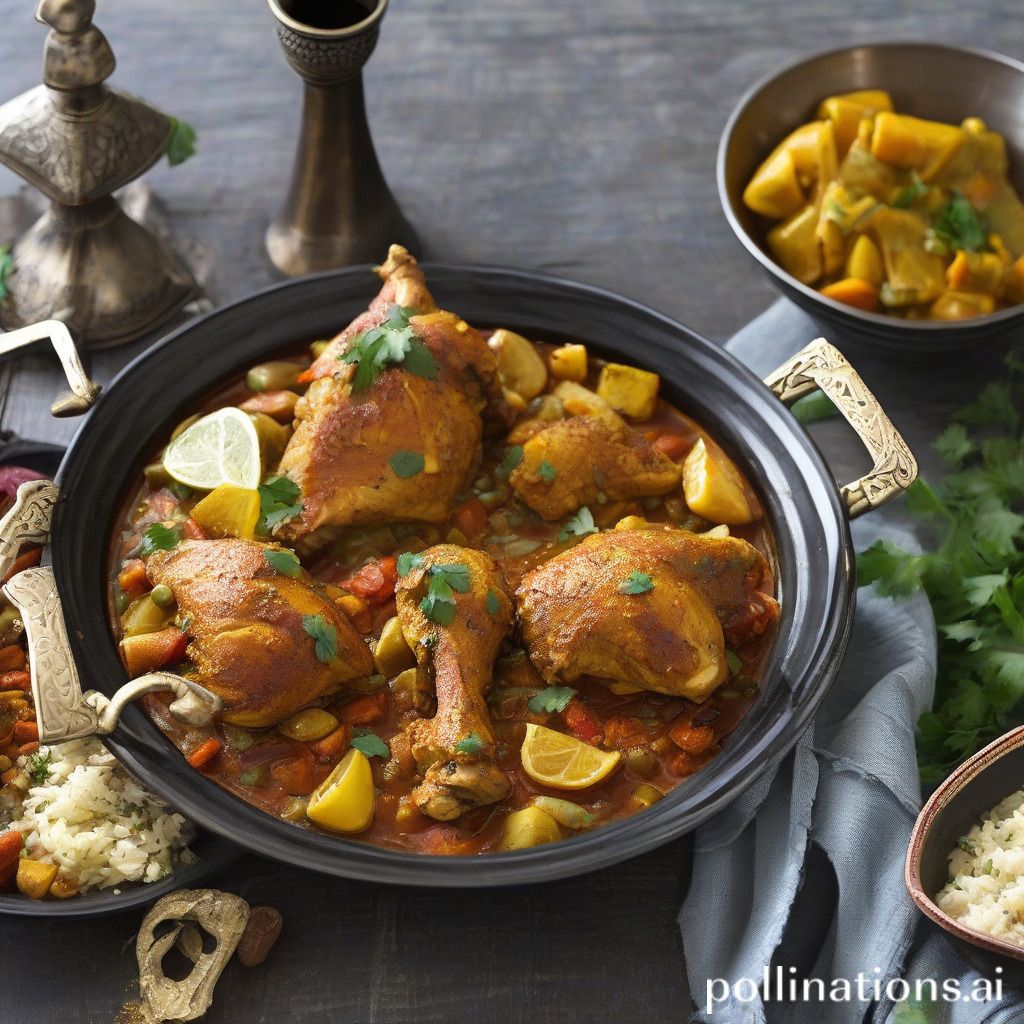Table of Contents
- Introduction
- Selection and Preparation of Chicken Thighs for Garlic Butter Chicken and Rice
- The Role of Garlic and Butter in Enhancing Flavor
- Cooking Techniques for Perfectly Tender Chicken and Fluffy Rice
- The Importance of Lemon and Fresh Parsley in Balancing the Dish
- Pairing Garlic Butter Chicken and Rice with Suitable Sides and Drinks
- Creative Variations of Garlic Butter Chicken
- Tips for Using Fresh Herbs to Elevate the Dish
- Nutritional Benefits and Considerations
- Conclusion
- Frequently Asked Questions
Introduction

This culinary journey begins with the freshest ingredients, each playing a crucial role in creating a symphony of flavors. From succulent chicken breasts to fragrant garlic cloves, each element melds harmoniously to produce a masterpiece on your plate. The velvety smoothness of butter pairs impeccably with the aromatic embrace of garlic, while delicate jasmine rice soaks up these incredible flavors. All the elements come together to create a dish that is comforting, elegant, and irresistibly tasty.
In this article, we’re not just hitting those high notes of flavor but also ensuring that you have a delightful kitchen experience from start to finish. Intrigued? Read on to discover how you can master the ultimate Garlic Butter Chicken and Rice with ease!
Selection and Preparation of Chicken Thighs for Garlic Butter Chicken and Rice
When preparing Garlic Butter Chicken and Rice, the choice of chicken thighs plays a crucial role in achieving a dish that’s both flavorful and juicy. Chicken thighs are preferred for their rich taste and succulent texture, making them the perfect match for the buttery garlic sauce. When selecting chicken thighs, look for those that have a uniform pink color without any gray spots, and a smooth, shiny skin; this indicates freshness. Opt for bone-in, skin-on thighs if you desire a dish with extra flavor and moisture, as the bone and skin enhance taste and retain juiciness during cooking.
Once selected, it’s important to properly prepare the chicken thighs. Start by patting them dry with a paper towel to ensure the skin becomes delightfully crispy when cooked. If using frozen chicken, ensure it is thoroughly defrosted in the refrigerator to maintain a consistent cooking time and temperature. Trim any excess fat for a leaner dish but be careful not to remove too much, as the fat aids in flavor delivery. To maximize flavor absorption, consider marinating the chicken thighs in a mixture of garlic, lemon, and your choice of herbs for at least an hour before cooking. This preparation ensures the chicken melds beautifully with the garlic butter sauce for a satisfying meal.
The Role of Garlic and Butter in Enhancing Flavor
Garlic and butter are the quintessential duo when it comes to flavor enhancement in cooking, particularly in dishes like Garlic Butter Chicken and Rice. The robust flavor profile of garlic, with its pungent yet sweet undertones, brings an aromatic intensity that complements a wide range of ingredients. In contrast, butter adds a rich, creamy texture that helps balance the dish, providing a smooth mouthfeel while elevating the natural flavors of the chicken and rice. Butter’s fat content helps in cooking garlic to its ideal texture, allowing it to infuse into the dish without burning, thus releasing essential oils that enhance the overall flavor.
Additionally, when garlic and butter are combined, they produce a unique umami experience that appeals to the taste buds on multiple levels. This combination not only enriches the main components but also allows any added herbs or spices to stand out without overwhelming the dish. Whether you’re spreading garlic butter on bread or using it as a marinade, its versatility is unparalleled, making it a staple in culinary practices across the globe. The melding of these two ingredients creates a savory symphony, ideal for transforming simple dishes into gourmet experiences.
Cooking Techniques for Perfectly Tender Chicken and Fluffy Rice
When preparing garlic butter chicken and rice, mastering a few cooking techniques can ensure your chicken is tender and your rice is fluffy. Start by seasoning the chicken properly, which not only enhances flavor but also tenderizes the meat. A marinade with lemon juice, garlic, and herbs for at least 30 minutes can work wonders. Use a large enough pan to avoid overcrowding the chicken, allowing each piece to cook evenly and develop a golden-brown crust, crucial for locking in moisture.
For perfectly fluffy rice, rinsing it under cold water before cooking is key to removing excess starch, which can cause clumping. Use a 1:2 ratio of rice to water for ideal results, and always bring the water to a boil before adding the rice. Once boiling, reduce the heat to the lowest setting and cover with a tight-fitting lid. Do not uncover or stir the rice while it’s cooking to allow steam to build within, ensuring each grain cooks evenly. Once done, remove from heat and let it sit for a few minutes before fluffing it with a fork. Follow these techniques, and you’ll have a delicious meal with perfectly tender chicken and fluffy rice.
The Importance of Lemon and Fresh Parsley in Balancing the Dish
In the delightful dish of garlic butter chicken and rice, the ingredients of lemon and fresh parsley play a crucial role in balancing flavors and elevating the overall culinary experience. Lemon, with its vibrant citrus notes, provides a refreshing acidity that counteracts the richness of the butter and the robust flavors of the garlic and chicken. This zesty element not only enhances flavor but also aids in tenderizing the chicken, ensuring it remains juicy and succulent.
On the other hand, fresh parsley adds a beautiful burst of color and a slightly peppery taste, which complements the other ingredients exquisitely. Its light, herbaceous quality introduces a layer of freshness and sophistication, cutting through the creaminess of the dish. Moreover, parsley is packed with essential vitamins and minerals, contributing nutritional value to the meal. Incorporating these two ingredients ensures a harmonious blend of rich and refreshing elements, making garlic butter chicken and rice an unforgettable dish. Together, lemon and parsley provide a dynamic pairing that transforms this comforting meal into a flavorful masterpiece.
Pairing Garlic Butter Chicken and Rice with Suitable Sides and Drinks
Garlic Butter Chicken and Rice is a delightful dish that offers a rich combination of flavors and textures. Pairing it with the right sides and drinks can elevate the dining experience. Consider complementing the meal with a crisp green salad or roasted vegetables such as asparagus or broccoli, which add a healthy and refreshing element to the dish. A simple Caesar salad with fresh romaine and a light dressing will also pair well, balancing the richness of the garlic butter. For a more hearty option, consider including a slice of garlic bread or a freshly baked dinner roll to soak up the savory sauce.
When it comes to beverages, a chilled white wine, such as a Sauvignon Blanc or Chardonnay, can be an excellent choice, as it complements the garlic and buttery flavors without overpowering the dish. If you prefer non-alcoholic drinks, a sparkling water infused with lemon or lime, or a light herbal tea, can provide a refreshing contrast. Finally, finish the meal with a light dessert, like a fruit sorbet or a crisp apple tart, to cleanse the palate and complete the culinary experience.
Creative Variations of Garlic Butter Chicken
Garlic Butter Chicken is a versatile dish that can evolve in numerous creative ways to suit different culinary preferences. For an exotic twist, consider adding a touch of spice with the introduction of paprika, cayenne pepper, or even a dash of chili flakes. This enhances the heat factor and brings a new dimension to the classic recipe.
If you’re leaning towards an Italian-inspired variation, try adding sun-dried tomatoes and a handful of fresh spinach. These ingredients not only add vibrant color but also enrich the flavor profile with a sweet and tangy note that complements the creamy garlic butter base perfectly.
For those who enjoy a hint of citrus, a squeeze of fresh lemon juice or a sprinkle of lemon zest can instantly brighten the dish. This version pairs excellently with a side of sautéed asparagus or broccoli, creating a refreshing dining experience.
To make the dish even more wholesome, incorporations such as mushrooms or artichoke hearts introduce earthy tones that balance the richness of the garlic butter. With these creative variations, Garlic Butter Chicken can transform into a multitude of gourmet experiences, each uniquely delightful.
Tips for Using Fresh Herbs to Elevate the Dish
Using fresh herbs can significantly enhance the flavor profile of Garlic Butter Chicken and Rice, adding a layer of complexity and freshness to the dish. Start by choosing the right herbs; thyme, rosemary, and parsley are excellent choices for this recipe. Thyme offers a subtle earthy flavor, while rosemary adds a hint of pine-like freshness. Parsley, on the other hand, provides a bright, clean flavor that balances the richness of butter.
For optimal results, finely chop the herbs before adding them to your dish. This not only releases their aromatic oils but also ensures even distribution throughout the chicken and rice. Incorporate the herbs into the butter as it melts for a more infused flavor. Serve the dish with a final garnish of freshly chopped parsley to add a touch of color and an extra burst of flavor.
Storing herbs correctly is crucial for maintaining their freshness. Wrap them in a damp paper towel and place them in a resealable plastic bag in the refrigerator. Fresh herbs can last for up to a week when stored this way. By following these simple tips, you can elevate the taste and presentation of your Garlic Butter Chicken and Rice, making it a memorable meal.
Nutritional Benefits and Considerations
Garlic Butter Chicken and Rice offers a delightful balance of flavors while providing several nutritional benefits. Chicken is a high-quality source of protein, essential for muscle repair and growth. It also supplies important nutrients such as vitamin B6, which supports brain health, and phosphorus, crucial for maintaining strong bones.
Additionally, garlic, a key ingredient, is known for its antioxidant properties and potential to boost the immune system. It contains allicin, a compound linked to health benefits like reducing the risk of certain chronic diseases, including heart disease.
Rice, often used as a complementary base, is an excellent source of carbohydrates, providing energy. Opting for brown rice instead of white can enhance the dish’s nutritional profile, as it provides more fiber and essential minerals like magnesium and selenium.
However, it is worth considering the use of butter in this dish. While it imparts a rich flavor, butter is high in saturated fats, which should be consumed in moderation. For a healthier variation, you might substitute some of the butter with a healthier fat like olive oil, which contains unsaturated fats beneficial for heart health.
Conclusion
As you explore the exquisite layers of flavors and culinary techniques in crafting Garlic Butter Chicken and Rice, it’s evident that mastering such a dish can elevate your cooking repertoire and tantalize the taste buds of anyone lucky enough to sample your creation. Yet, why stop at just one spectacular recipe? To truly revolutionize your chicken culinary experience, dive into the world of The Chicken Bible, a comprehensive collection offering 500 innovative recipes that promise to transform how you prepare this beloved protein forever. This masterpiece not only helps you bid farewell to mundane meals but also guides you through creating delectable dishes ranging from easy dinners to succulent braises, wings, and stir-fries. Click the link (here) to secure your copy today, and embark on a delicious journey of unparalleled culinary discovery. Embrace the potential of chicken in your kitchen and never have a dull dish again.

















